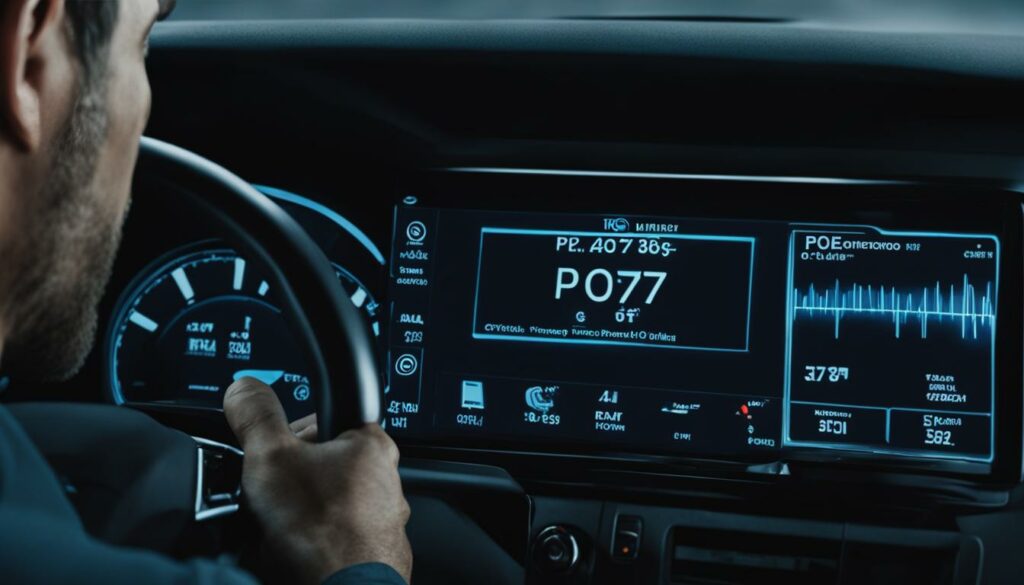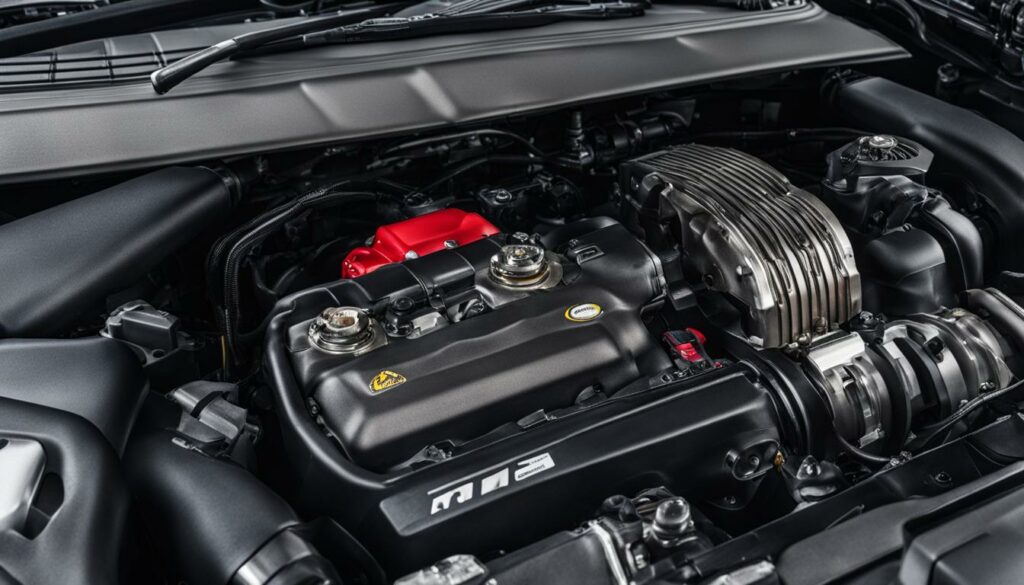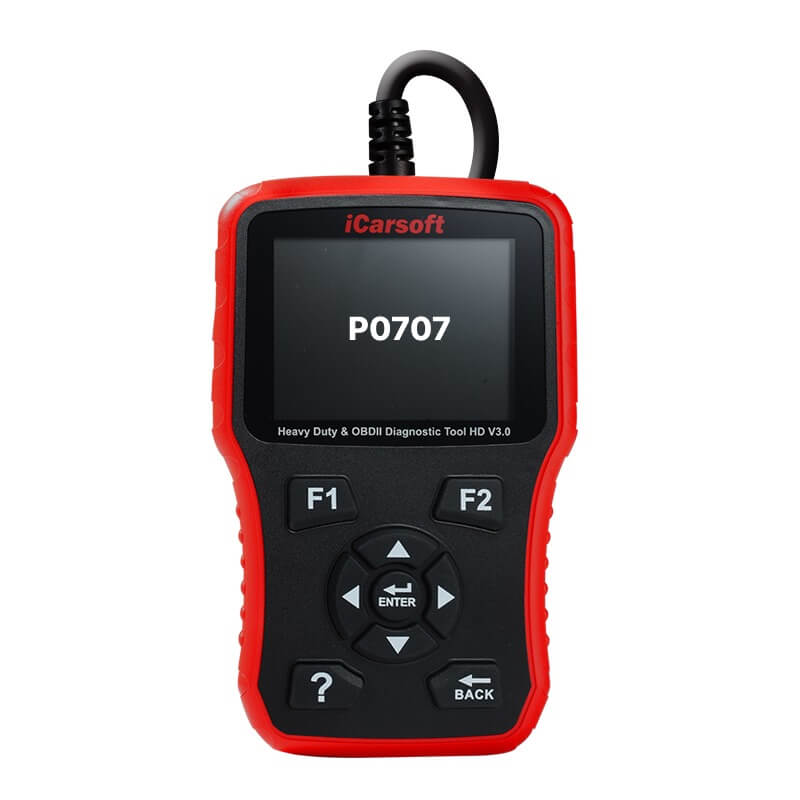P0707 – Transmission Range Sensor Circuit Low
POSTED IN pcodes
If you’re experiencing transmission problems in your vehicle, the P0707 code might be the culprit. This diagnostic trouble code (DTC) refers to the Transmission Range Sensor Circuit Low, indicating that the transmission range sensor or neutral safety switch is not sending a high enough voltage signal to the powertrain control module (PCM).
In this article, we’ll provide a technical description of the P0707 code, discuss its meaning and severity, explore common symptoms and causes, and offer troubleshooting steps and repair options. We’ll also provide key takeaways to help you understand and address the issue effectively.
Before we proceed, let’s take a moment to understand what the transmission range sensor is. As the name suggests, it’s responsible for detecting the position of the gear selector and transmitting this information to the PCM. Based on the sensor’s input, the PCM regulates hydraulic pressure within the transmission, ensuring smooth gear changes and overall transmission performance.
Key Takeaways:
- P0707 is a diagnostic trouble code related to the Transmission Range Sensor Circuit Low.
- It indicates that the transmission range sensor or neutral safety switch is not sending a high enough voltage signal to the PCM.
- Common symptoms of the P0707 code include a no-start condition, sudden acceleration, erratic shifting, enabled limp mode, and an illuminated check engine light.
- Common causes of the code include a malfunctioning transmission range sensor, misadjusted sensor, faulty neutral safety switch, damaged shift linkage, faulty PCM, and faulty wiring.
- Diagnosing and repairing the P0707 code may require professional expertise and specialized equipment.
What Does the P0707 Code Mean?
The P0707 code indicates a problem with the Transmission Range Sensor (TRS) circuit. This code is triggered when the transmission range sensor or neutral safety switch is not sending a high enough voltage signal to the Powertrain Control Module (PCM).
The TRS plays a crucial role in the operation of the transmission. It is used by the PCM to determine the position of the gear selector and regulate hydraulic pressure within the transmission. When the TRS or neutral safety switch fails to provide the required voltage signal, it can lead to various issues with the transmission’s performance.
Buy tested tuning file for Adblue / EGR / DPF / Adblue off now!
Common Causes of the P0707 Code
The P0707 code can be triggered by various common causes. These include:
- Malfunctioning Transmission Range Sensor: A malfunctioning transmission range sensor can lead to a low voltage signal being sent to the PCM, resulting in the P0707 code.
- Misadjusted Transmission Range Sensor: A misadjusted transmission range sensor can also cause a low voltage signal, triggering the P0707 code.
- Malfunctioning Neutral Safety Switch: A malfunctioning neutral safety switch can contribute to the P0707 code by sending incorrect voltage signals to the PCM.
- Damage Shift Linkage: A damaged shift linkage can affect the proper operation of the transmission range sensor, leading to the P0707 code.
- Faulty PCM: If the powertrain control module (PCM) is faulty, it may not receive accurate voltage signals from the transmission range sensor or neutral safety switch, resulting in the P0707 code.
- Faulty Wiring: Faulty wiring connections or damaged wiring harnesses can disrupt the transmission range sensor circuit, causing the P0707 code to be logged.
To diagnose the specific cause of the P0707 code, it is recommended to consult a professional mechanic or technician who has the expertise and necessary equipment to perform accurate diagnosis and repairs.

Common Symptoms of the P0707 Code
Vehicles experiencing the P0707 code can manifest a range of common symptoms. These symptoms serve as indicators that the code has been triggered and require attention. Familiarizing oneself with these symptoms can help vehicle owners and mechanics identify potential transmission issues and take appropriate action.
No-Start Condition
An alarming symptom associated with the P0707 code is a no-start condition. This means that the vehicle fails to initiate or engage the engine when attempting to start it. In most cases, this issue arises when the Transmission Range Sensor (TRS) or neutral safety switch is unable to register the correct gear position, hindering the engine start-up process.
Sudden Acceleration and Erratic Shifting
Erratic shifting and sudden acceleration are other noticeable symptoms of the P0707 code. These symptoms occur due to improper signals being sent to the Powertrain Control Module (PCM) by the malfunctioning transmission range sensor or neutral safety switch. As a result, the vehicle experiences abrupt gear changes and unpredictable acceleration.
Limp Mode Activation
The P0707 code can also trigger the vehicle’s limp mode. Limp mode is a protective mechanism implemented by the PCM to safeguard the transmission from further damage. When limp mode is enabled, the vehicle’s performance is significantly restricted, and it operates at a reduced power level. This serves as a signal to the driver that there is an underlying issue with the transmission system.
Illuminated Check Engine Light
One of the most prominent and easily noticeable symptoms of the P0707 code is an illuminated check engine light on the vehicle’s dashboard. The check engine light serves as a visual indication that the code has been triggered and requires attention. When this light is illuminated, it is crucial to address the issue promptly to prevent any further damage to the transmission system.

These symptoms should not be ignored, as they may indicate complex transmission problems that require immediate attention. It is recommended to consult a professional mechanic and perform a thorough diagnostic test to identify and address the underlying cause of the P0707 code.
How to Diagnose the P0707 Code
Diagnosing the P0707 code can be a complex task that requires testing various components, including the transmission range sensor and the neutral safety switch. It is recommended to seek the assistance of a professional mechanic for accurate diagnosis and proper testing procedures. Professionals have the expertise and specialized tools, such as a multimeter, to effectively diagnose the issue.
During the diagnostic process, professionals will perform a visual inspection to detect any signs of damage or misalignment in the shift linkage. They will also use a multimeter to test the voltage output of the transmission range sensor. By examining these components and conducting comprehensive tests, professionals can pinpoint the exact cause of the P0707 code.
Diagnosing the P0707 code is not a task for inexperienced individuals, as it requires specialized knowledge and equipment. It is best to rely on the skills of a professional mechanic to ensure an accurate diagnosis and effective resolution of the issue.
Diagnostic Process for P0707 Code
- Consult a professional mechanic with experience in diagnosing transmission issues.
- Perform a visual inspection of the shift linkage for any signs of damage or misalignment.
- Use a multimeter to measure the voltage output of the transmission range sensor.
- Compare the measured voltage with the manufacturer’s specifications to determine if it falls within the acceptable range.
- If the voltage is outside the acceptable range, further testing may be required to identify the specific component causing the issue.
By following this diagnostic process, professionals can accurately identify the cause of the P0707 code and recommend the necessary repairs or replacements to resolve the issue.
| Diagnostic Process | Description |
|---|---|
| Consult a professional mechanic | Seek the assistance of a skilled mechanic with experience in diagnosing transmission problems |
| Perform a visual inspection | Conduct a thorough visual examination of the shift linkage to check for any damage or misalignment |
| Use a multimeter | Measure the voltage output of the transmission range sensor using a multimeter |
| Compare the measured voltage | Compare the measured voltage with the manufacturer’s specified range to determine if it is within the acceptable limits |
| Further testing if needed | If the measured voltage is outside the acceptable range, additional testing may be required to identify the specific component causing the issue |
Conclusion
In conclusion, the P0707 code is a clear indication of a transmission range sensor circuit problem, specifically a low voltage signal being sent to the PCM. This code can lead to various transmission problems and should be addressed promptly for proper vehicle functionality.
Common causes of the P0707 code include a malfunctioning transmission range sensor, misadjusted sensor, faulty neutral safety switch, damaged shift linkage, faulty PCM, and faulty wiring. It is important to identify and resolve these underlying issues to prevent further complications.
Diagnosing the P0707 code requires professional assistance, as it involves expertise and specialized equipment. Consulting a professional mechanic is recommended to accurately diagnose the problem and perform the necessary repairs. They have the knowledge and tools to troubleshoot the issue effectively.
Alternatively, if professional assistance is unavailable, an alternative solution is to permanently remove the P0707 code by uploading the ECU file to a portal. However, it is crucial to note that this should only serve as a temporary measure, as it does not address the root cause of the problem.
FAQ
What is the P0707 code?
The P0707 code refers to a diagnostic trouble code that indicates a Transmission Range Sensor Circuit Low. It is triggered when the transmission range sensor or neutral safety switch is not sending a high enough voltage signal to the powertrain control module (PCM).
What does the P0707 code mean?
The P0707 code means that there is a problem with the transmission range sensor circuit. The transmission range sensor or neutral safety switch is not sending a high enough voltage signal to the PCM. The PCM uses the transmission range sensor to determine the position of the gear selector and regulate hydraulic pressure within the transmission.
What are the common causes of the P0707 code?
The common causes of the P0707 code include a malfunctioning transmission range sensor or neutral safety switch, a misadjusted transmission range sensor, a damaged shift linkage, a faulty PCM, or faulty wiring.
What are the common symptoms of the P0707 code?
Vehicles with a P0707 code may experience symptoms such as a no-start condition, sudden acceleration, erratic shifting, enabled limp mode, and an illuminated check engine light.
How do you diagnose the P0707 code?
Diagnosing the P0707 code can be challenging and requires expertise and specialized equipment. It is recommended to consult a professional mechanic who can test various components, such as the transmission range sensor and the neutral safety switch, using tools like a multimeter.
Can I fix the P0707 code on my own?
Diagnosing and repairing the P0707 code requires expertise and specialized equipment. It is best to consult a professional mechanic for accurate diagnosis and proper testing procedures. However, if professional assistance is unavailable, an alternative solution is to permanently remove the P0707 code by uploading the ECU file to a portal.


